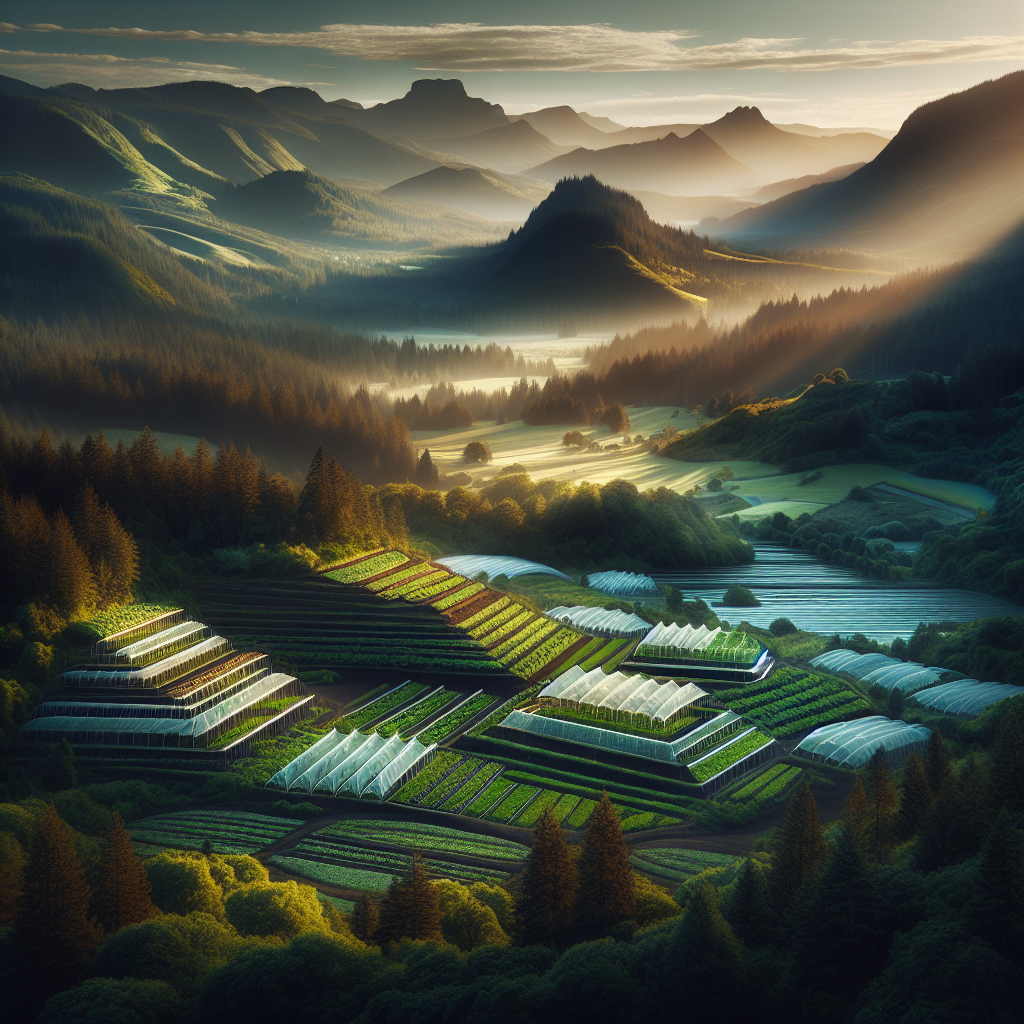The Blossoming of Regenerative Agriculture in Oregon
Nestled amidst the mighty Cascade Range to the East and the rugged shoreline of the Pacific Ocean to the West, our beloved Beaver State has a long-standing tradition of embracing environmental sustainability. But have you heard of the latest holistic approach gaining momentum amongst our farmsteads? It’s regenerative farming, folks, and it’s changing the landscape of Oregon agriculture.
And no, it’s not just some trendy buzzword you hear bandied about at the Portland Farmers Market or a discussion point over a crisp pint at Deschutes Brewery. It’s a back-to-the-earth farming practice that’s gorgeously blending the heart of our Oregon spirit with harmonious land management.
What’s All This Hype Around Regenerative Farming?
Regenerative farming, in a nutshell, is all about transforming the way we grow our food – enhancing biodiversity, enriching soils, and improving watersheds. It’s an antidote to counteract modern industrial agriculture, with its credits of soil erosion, water pollution, and declining wildlife habitat. We’re talking about breathing life back into the land here.

Farmers across Oregon are spearheading this movement, from small eco-gardeners in the lush Willamette Valley to large commercial set-ups out around the sage-covered high desert of Central Oregon. They have one shared goal – to leave their land healthier for future generations.
They’re seeding cover crops at family-farms like A2R Farms in Beaverton, a practice that’s like giving mother earth a comforting quilt, holding the soil together, and enhancing its fertility. They’re re-introducing livestock rotation across large fields, like at the Deck Family Farm in Junction City, a strategy with proven benefits for the land and the healthier meats that thrive on it. Local communities, passionate about sustainable consumption, are supporting these practices and helping to create a symbiotic cycle that’s not only growing nutritious food but also nurturing the earth.
Where the Rain Gets Your Name: Oregon and Regenerative Farming
First things first; Oregonians aren’t shy of a little rain. It’s our badge of honor, our liquid sunshine, and it’s what makes our Rose City bloom. And we know too, welcome as it is, that the runoff from the rain can leach nutrients from our soil— this, folks, is where regenerative farming plays a big role.
Farms using these methods better retain rainwater, rehydrate our plaque-dry soils, and build resilience against both Oregon’s dancing drizzle and those hot spells we get at the peak of summer. And that’s not all, folks. Regenerative farming isn’t just for our leafy fields. It’s also making waves in our viticulture world, with vineyards like Troon in the Applegate Valley championing biodynamic farming principles — an approach enhancing the terroir, wine flavor, and vine health.
Our beloved state has always been a frontrunner when it comes to green innovation. From the cycling trails of Eugene, to backyard chickens in Northeast Portland, we embrace an eco-conscious lifestyle in every corner of the state. The rise of regenerative farming is another jewel in Oregon’s green crown.
Oregon – Leading the Way Forward
Oregon might not be the biggest, but we sure are sturdy. We’re leaders, trailblazers — pioneers even, and regenerative farming fits right into that Oregon strut. The Oregon State University’s Small Farms Program is fostering the growth of these practices through research and extension work. Programs like ROSE (Regenerative Organic Systems Explorer) are teaching our next generation of farmers how to reverse climate change through agriculture.
Moreover, the state’s innovative Farmland Trust program is acting as a custodian of Oregon’s agricultural heritage, safeguarding land for future farm use and promoting sustainable farming practices. Their forever farm protocol ensures Oregon’s farmland thrives in perpetuity, not swallowed up by rapid urban development, but reserved for growing good food with good practices.
Each year, as the cherry blossom paints the sky of our state capitol in Salem, we see more farmers embracing regenerative agriculture. And it’s not just a transformation on our plates, but in our lives, our health, and our collective future.
With deep-rooted love and respect for our earth, Oregon’s regenerative farming community is laboring to ensure that we not only preserve but also restore what we’ve borrowed from Mother Nature. Now, isn’t that what being Oregonian is all about?
So next time you get caught in an Oregon drizzle, see it as a lifeline that keeps our state lush and our farms thriving. Embrace the rain, and remember the dedicated stewards of our farmland who are dancing in this metaphorical rain of change – regenerating, cultivating, and honoring the land beneath our feet. Let’s raise a toast (maybe with a glass of Oregon Pinot Noir) to their spirit and commitment. After all, we are what we grow – and boy, aren’t we growing beautifully!
